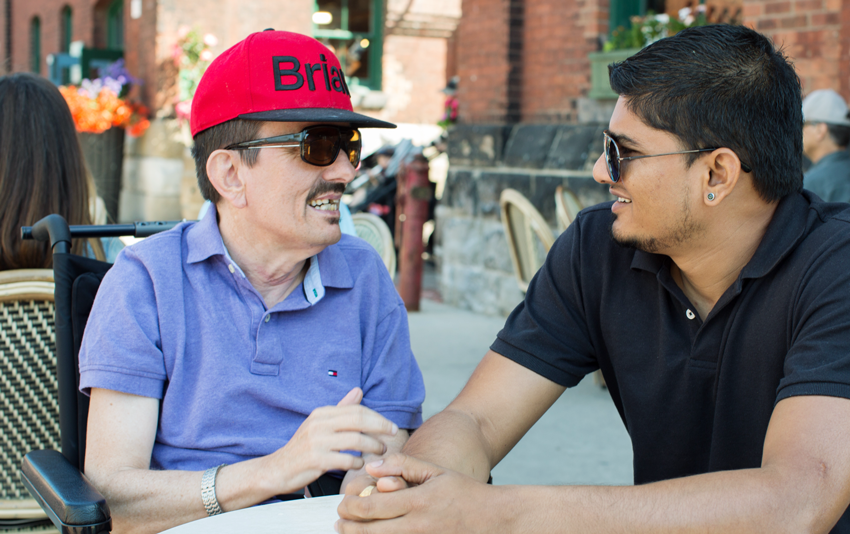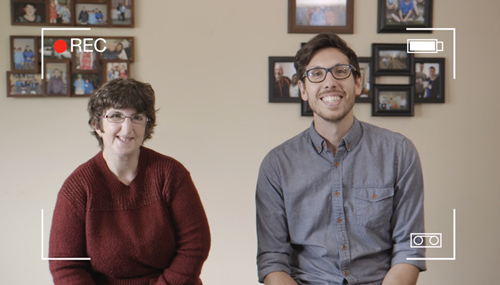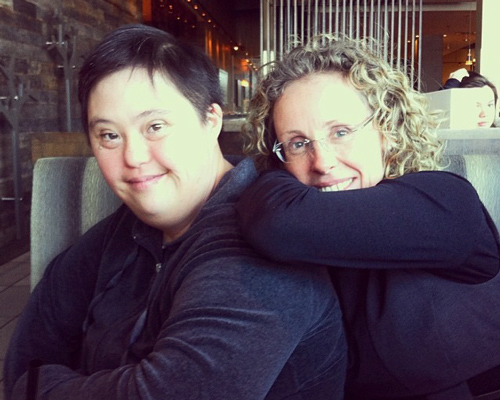Blog
Storytelling “with”

By John Guido with Jonathan Boulet-Groulx and Dr. Pamela Cushing
The classic L’Arche story (told by an assistant) goes something like this, “Every week Sally and I go out for a coffee. When I’m with Sally, I feel accepted just as I am. It’s changed my life.” Every assistant who hears this story goes, “I know just what you’re talking about!” Everyone else thinks, “I’m not sure I get it, but these L’Arche people sure are special.”
In L’Arche, we love stories and have a strong storytelling culture that goes back to our founding. However, our stories don’t always have the impact we want:
- L’Arche can be focused inwards and our stories often make sense only if you know the people or have similar experience.
- L’Arche words sound like a foreign language to people outside L’Arche.
- Sometimes, we tell stories without sensitivity to the history of how people with disabilities have been portrayed.
- Sometimes, we tell stories about or with people without finding out how they might choose to tell their stories.
- We can be too busy and don’t have the time to learn how to improve our skills and practice storytelling.
The stories aren’t really about disability but about encounters between people that teach us about being human, living with our vulnerabilities, and flourishing. Today, we’re called to find creative ways to tell stories with and by persons with disabilities that speak to the hearts and minds of the people we encounter.
Co-creating the Story

At L’Arche, we believe in the power of community art that supports each person to discover and develop their unique voice while working together on collective works. With his partners in L’Arche Arnprior and L’Arche Joliette, Jonathan Boulet-Groulx created short videos to share this vision of creative collaboration in photography and in all types of storytelling. Jonathan is a photographer, blogger, and video maker who has lived in L’Arche Haiti and worked with L’Arche Quebec and Canada.
Jonathan says, “It’s all about putting inclusion at the centre of the process” so that each person can develop their skills and discover their passion through creative teamwork. This process includes exploring different media and styles, looking at others' work for inspiration and to see what each person likes. Once people identify their interests, they learn techniques and develop their abilities.

Jonathan cautions that this way of working takes time. It means listening to every person’s ideas, taking the time to understand why a small detail means so much to the person. It may be the very detail that will bring people into the story and allow them to connect to the character. Once all ideas have been heard, there is a process to identify the story the team wants to tell, what ideas really serve that story, and which ideas may become their own stories. The goal is not perfection, but a story that connects to people and has impact in their lives. And that’s good enough!
Imagine the world differently
This tagline from the L’Arche International #AsIAm series reveals our goal to help people reimagine the place of persons with disabilities in society. In future months, we will hear from storyteller Michael McDonald about what he is learning about the co-creating process, cultural diversity, and telling stories with persons with disabilities. We are also part of this conversation in Canada in the values campaign and in many communities. We will also share what other storytellers are discovering.

We have work to do! Dr. Pamela Cushing is the Coordinator of the Disabilities Studies program at King’s College at Western University. At a retreat for L’Arche assistants, she named the challenge, “The public needs your stories. People with developmental impairments who cannot represent themselves in words need you to tell your stories about living with them. There is a dishearteningly small pool of positive cultural scripts out there about people with disabilities. If there are not good stories out there, how can we be surprised that the public imagination is so negative? Stories that do exist often idealize or romanticize the person so they are not seen as credible.
By ‘positive’ stories, I do not mean to imply that your stories should be all happy and upbeat – that kind of one-dimensional representation is not helpful. Your stories can have a powerful influence on the public imagination precisely because they are ‘polyvalent’ – they have many sides and range across diverse emotions. I have heard assistants tell stories that bring people to tears because they are so genuine – they blend acknowledging the hardships that the impairment entails with other elements like the hope that can still show forth, or the way that others can aggravate those hardships through exclusionary acts, or with humour at life’s complexity… But almost all of your stories convey an image of members with intellectual disabilities as real, complex people – just like everyone else.”
Make a Donation Now
Themes
- Accessibility
- Advocacy
- Aging
- Amitié
- Apprentissage
- Artist
- Belonging
- Care
- Caring for Others
- Celebration
- Collaboration
- Communication
- Community
- Contributions
- Core Members
- Creativity
- Daily Life
- Day Center
- Day Program
- Disability Arts
- Diversity
- Gifts and Abilities
- Gratitude
- History
- Inclusion
- Institutions
- Intentional Community
- Leadership
- Legislation
- Life-sharing
- Listening
- Mission
- More Human Society
- Mutual Relationships
- Neighbourhood
- Outreach
- Partnership
- Personal Journey
- Persons with Disabilities
- Policy
- Project
- Respect
- Responsibility
- Rights
- Service to Others
- Society
- Solidarity
- Story
- Teamwork
- Togetherness
- Traditions
- Values
- Vision
- Well-Being
- Workshop
- World
